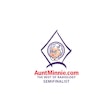Among high-risk patients who undergo cardiac catheterization, nearly a third develop radiocontrast-induced nephropathy (RCIN), according to Jamie Bubla, a clinical pharmacist at Methodist University Hospital in Memphis.
In a study presented at the 2003 American Society of Health-System Pharmacists in San Diego, Bubla and colleagues looked for an association between patient risk factors and RCIN -- particularly diabetes, chronic heart failure, and advanced age -- and administration of a radiocontrast agent within 48 hours prior to cardiac catheterization.
They also analyzed the results of the three different prophylaxis regimens their institution used: hydration one hour before and four hours after catheterization; acetylcysteine; and fenoldopam. In particular they wanted to see the effect these modalities had on key RCIN-related sequelae: dialysis, length of stay, and death.
The results showed that among 56 patients, 29% developed RCIN. Of the 19 who received hydration and acetylcysteine, the rate was 36%. Among the 15 who received hydration alone, the RCIN rate was 40%.
In the 15 patients who received all three therapies, that rate was 20%. However, when the investigators analyzed the data by treatment and number of risk factors, they found that the difference between the patients receiving all three treatments and those receiving acetylcysteine and hydration was not significant.
Six patients received no prophylaxis, and one patient received acetylcysteine and fenoldopam. None of these developed RCIN, although the latter patient required temporary dialysis.
Three patients died during hospitalization, one on hydration and acetylcysteine, and two on hydration alone. Four patients required dialysis, two on hydration and acetylcysteine, one on hydration alone, and one on acetylcysteine and fenoldopam. Among patients who developed RCIN, the median length of stay was 7.5 days. Among patients who did not develop RCIN, the median stay was 5.5 days.
Diabetes was the most significant risk factor, Bubla said. "Among the 12 patients whose only risk factor was diabetes, 50% developed RCIN," she said. "Patients with two risk factors had a 20% risk, compared to 43% for those with three risk factors." All patients who had four risk factors developed RCIN.
Bubla added that one of the prophylactic agents, fenoldopam (Corlopam), is ineffective and is therefore unnecessary. "There’s no reason to use fenoldopam," she said. "The other two prophylactic treatments, hydration and acetylcysteine (Mucomyst), are your best bet."
Both the risks and the expense of fenoldopam should give interventional radiologists pause, according to Thomas Barrs, a clinical pharmacy specialist at DeKalb Medical Center in Decatur, GA.
Because one risk is hypotension, "it is entirely possible that fenoldopam-induced hypotension will cause the very thing it is employed to prevent, nephropathy," he said. "When blood pressure becomes low enough, renal hypoperfusion can occur with the consequence of renal injury."
Barrs also pointed out that the average wholesale price for a course of therapy with fenoldopam for this indication ranges from $275-$550. In addition to the cost of the drug, during administration "the patient must be continuously monitored in a specialty setting, such as critical care," he said. In contrast, "the cost for intravenous saline hydration therapy is minimal. The average wholesale price for a course of acetylcysteine (for this indication) is $7 or $8."
By Paula MoyerAuntMinnie.com contributing writer
September 3, 2003
Related Reading
Theophylline is safe and effective for contrast-induced nephropathy, June 6, 2003
Discography with gadolinium works for iodine-allergic patients, February 2, 2003
Iso-osmolar contrast agent less likely to be nephrotoxic in high-risk patients, February 6, 2003
Acetylcysteine helps prevent nephrotoxicity during coronary angiography, February 6, 2003
Copyright © 2003 AuntMinnie.com



















